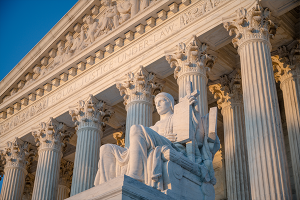
Advocacy
What is the fundamental issue?
Several factors have contributed to a tightening of credit availability for commercial real estate loans (CRE lending), including increased underwriting standards, increased regulation of banks by multiple federal government agencies, and higher compliance costs for lenders.
I am a real estate professional. What does this mean for my business?
Increased banking regulations, particularly on community and regional banks, mean that banks are spending more of their capital on regulatory compliance, which impacts their ability to finance commercial real estate development. In that atmosphere, new sources of lending, such as online banks and crowdfunding, have emerged and gained popularity in the market as an alternative to traditional sources.
NAR Policy on Commercial Real Estate Lending
NAR supports protecting and enhancing the flow of capital to commercial real estate. NAR believes Congress and the federal government should consider legislation and regulation aimed at improving commercial real estate markets including: (1) the creation of a U.S. covered bond market, (2) increasing the cap on credit union member business lending (MBL), (3) additional banking agency guidance related to term extensions and (4) improving credit availability for small businesses.
Legislative/Regulatory Status/Outlook
Regulatory Burdens for Small and Community Banks
Many legislators are examining the possibility of reducing the regulatory burdens that apply to smaller banks. Congressional hearings and legislation in the 115th Congress have addressed rolling back provisions of Dodd-Frank, which was the impetus for much of the regulatory changes impacting banking since it passed in 2010. Other regulations being examined include the "High Volatility Commercial Real Estate" (HVCRE) risk-weight requirements for commercial acquisition, development, and construction (ADC) loans under Basel III.
Covered Bond Market
Covered bonds are debt securities backed by cash flows from mortgages or public sector loans. They are similar in many ways to asset-backed securities created in securitization, but remain on the issuers consolidated balance sheet (usually with an appropriate capital charge). Already in use in Europe and Canada, covered bonds represent a potential complementary funding source in the U.S. housing financial system as well as an alternative to securitization that could help address ongoing refinancing challenges in the commercial real estate sector. A covered bond market would provide additional finance options to borrowers in commercial real estate markets where it might otherwise be limited.
Credit Union Lending - Member Business Loans
The National Credit Union Administration (NCUA) adopted a rule in March 2016 that eliminates restrictions on credit unions making member business loans (MBL). This should increase lending to credit union members and possibly attract new borrowers to this source of lending.
Alternative Lending
Lending by non-bank entities has grown. The JOBS Act of 2012 removed several layers of regulatory burdens for businesses raising capital via crowdfunding. Rulemaking for the JOBS Act was completed in 2016. Some members of Congress have stated an interest in increasing access to some alternative sources of lending, such as crowdfunding, by lowering burdens to entry for both crowdfunding platforms (by lowering compliance and registration requirements) and investors (by increasing the amount unaccredited and accredited investors can invest in a project). The 115th Congress may see further legislation on alternative lending sources, and perhaps a follow-up bill to the JOBS Act.
Improving Credit Availability for Small Businesses
In March 2015, the SBA rolled out "SBA One," a program to streamline the application process and several other points of contact between the agency and a borrower. Beginning in January 2018 it lowered the equity requirements for the SBA 7(a) loan program from 25% down to 10%. The 7(a) program provides loans to fund startup costs including purchasing new land, purchasing or expanding an existing business, and refinancing existing debt. Small business lending is frequently a topic of discussion in Congress, and there have been hearings in both the House and the Senate on the issue. NAR works closely with the SBA to improve their programs and educate members on their availability and uses, including educational sessions and panels featuring the SBA Administrator and program officers at NAR conferences. In April 2017 NAR sent a letter to the House Small Business Subcommittee on Economic Growth, Taxation, and Capital Access for its hearing, "Small Businesses: The Key to Economic Growth," encouraging Congress to look at regulations that negatively impact small businesses and preserve sections of the tax code (such as 1031 like-kind exchanges) that are important to their growth and development.
NAR Committee
Commercial Federal Policy Committee
Current Legislation/Regulation
None at this time.
In-Depth
Letters to Congress
Congressional testimonies
Letters to federal agencies
Issue summary
NAR Federal Issues Tracker
Legislative Contact(s):
Erin Stackley
estackley@nar.realtor
202-383-1150
Vijay Yadlapati
vyadlapati@nar.realtor
202-383-1090
Regulatory Contact(s):
Erin Stackley
estackley@nar.realtor
202-383-1150














